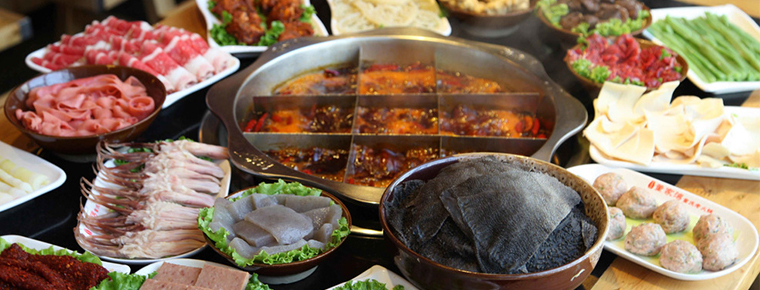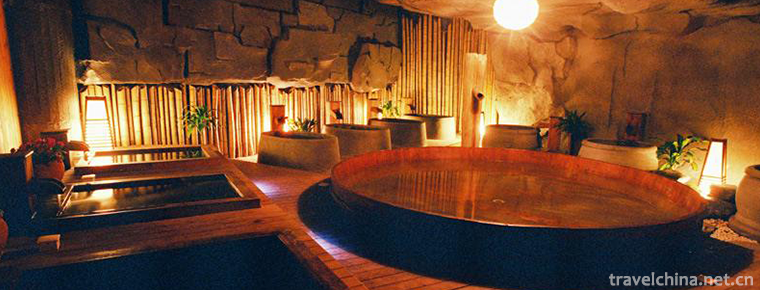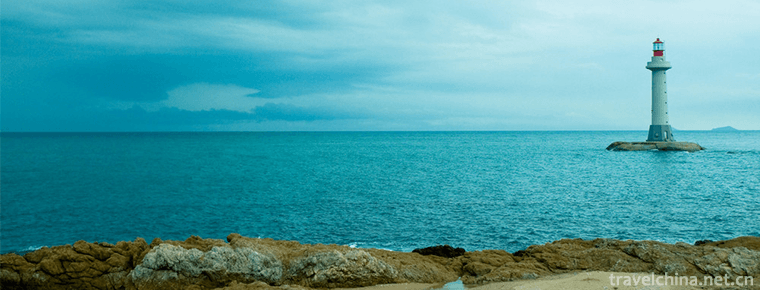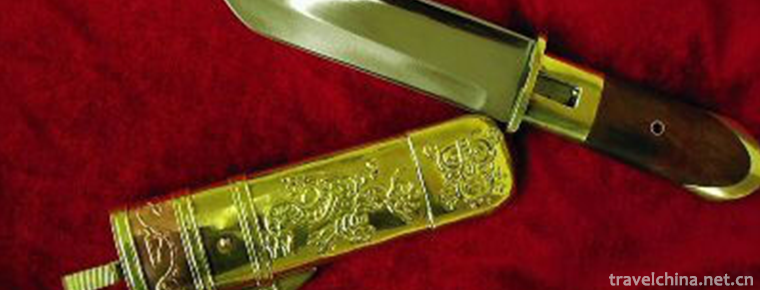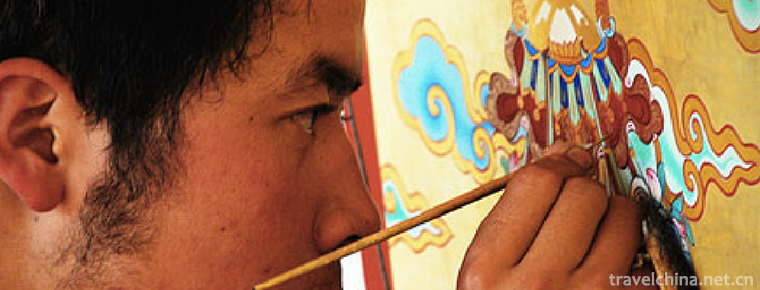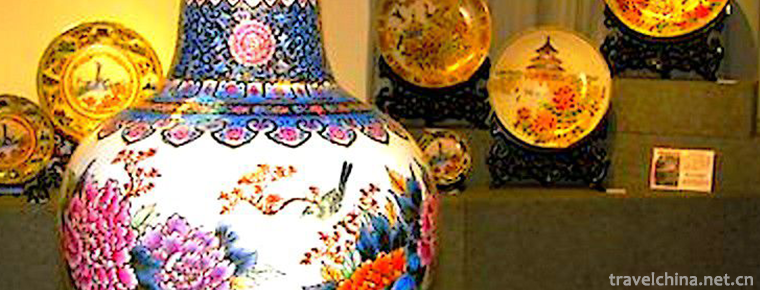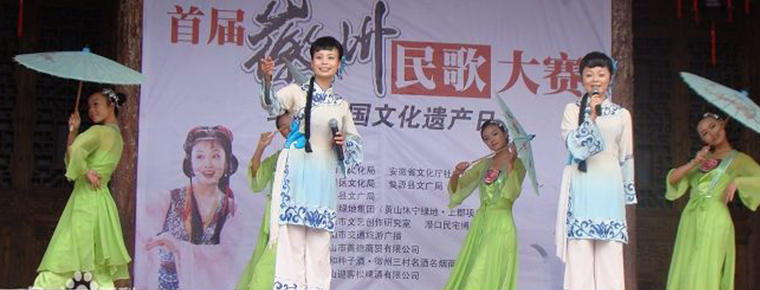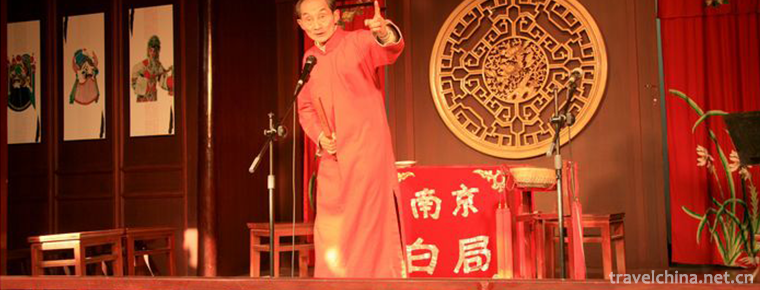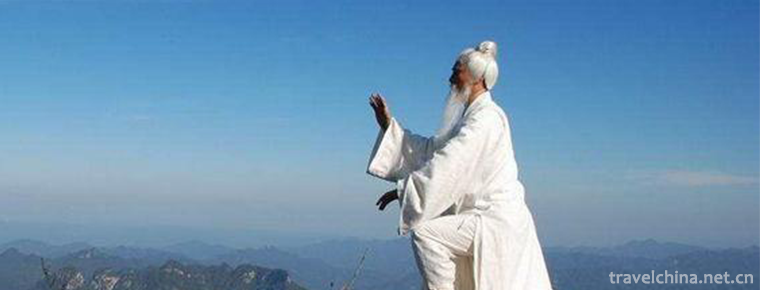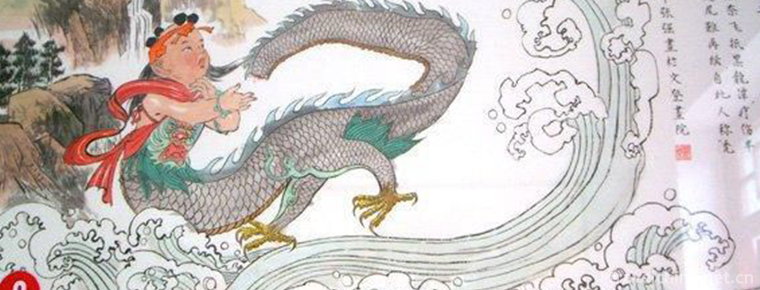Pagoda of Xing Jiao Temple
Hingjiao Temple Pagoda is located in the original Hingjiao Temple of Shaoling, Chang'an District, Xi'an Province, Shaanxi Province. It is a famous figure in the history of Buddhist communication, a famous monk of Tang Dynasty, Master Xuanzang, and his disciples Yuanjue Tomb Pagoda of Xuanji and Xinluo disciples. It is the oldest Pavilion Pagoda in China. It shows the development of Buddhism from Silk Road to Chang'an and its influence on the Korean Peninsula.
Xingjiao Temple is one of the ancestral courts of Buddhist phantom sect (also known as Confucianism and Cienzong). Xingjiao Temple Pagoda is the tomb pagoda of three ancestors of Confucianism Sect. It plays an important role in the history of Buddhism communication and cultural exchange between China and India.
On March 4, 1961, the Xingjiao Temple Pagoda was announced by the State Council as the first batch of national key cultural relics protection units . On June 22, 2014, at the 38th UNESCO World Heritage Committee meeting in Doha, Qatar, Xingjiao Temple Pagoda was successfully listed on the World Heritage List as a site of the Silk Road: Road Network of Chang'an-Tianshan Corridor, which was jointly applied for by China, Kazakhstan and Kyrgyzstan.
Historical evolution
Xingjiao Temple Pagoda is located about 20 kilometers south of the city of Xi'an in the Xingjiao Temple on the original side of Shaoling. Xingjiao Temple, also known as "Protecting the Nation and Xingjiao Temple in the Great Tang Dynasty", was built in the second year of General Zhang of Gaozong (664) in Tang Dynasty. It is a spiritual pagoda dedicated to the memory of Xuanzang, a famous translator and traveler of Tang Dynasty. Later, his disciples also slept here, accompanied by the spiritual pagoda. Hence, Xingjiao Temple became the head of Fanchuan Eight Monasteries in Tang Dynasty and one of the ancestors of the Eight Faiths of Buddhism in China. The pagoda of Xingjiao Temple is located in the west-crossing courtyard of Xingjiao Temple. The west-crossing courtyard is also called the Ci'en Tower Court. The three pagodas have a history of more than 1,300 years. Among the green cypress and green bamboo, the three pagodas stand in different shapes.
Xingjiao Temple Pagoda is not only Xuanzang Shrine Pagoda, but also the three spiritual pagodas of Xuanzang, Xuanji and Yuanzhu, the ancestors of Xingjiao Monastery, which are the oldest Pavilion pagodas in China.
Xuanzang Shrita
In the first year of Linde, Emperor Gaozong of Tang Dynasty (664), Xuanzang was silent in Yuhua Palace (now in Tongchuan, Shaanxi Province). Tang Gaozong buried the cremated bones on the Bailuyuan on the East Bank of Xishui in the eastern suburb of Xi'an, following Xuanzang's last words, "Place them in remote places on mountain streams and keep away from the temple".
Li Zhi of Gaozong in Tang Dynasty highly respected Xuanzang. It is said that he often shed tears at the spiritual tower overlooking Bailuyuan in Hanyuan Palace for the sake of the health of the Holy body. Empress Wu Zetian of Gaozong ordered Xuanzang's remains to be buried in Shaolingyuan, south of Chang'an, in two years (669) of General Chapter. The next year, he built a temple to commemorate them. The newly built Buddhist temple was named "Protecting the Nation and Promoting Religious Temple of the Great Tang Dynasty". Suzong of the late Tang Dynasty inscribed the word "Xing Jiao" on Xuanzang's Shrine Pagoda, which implied that Da Xing Buddhism and Da Xing Buddhism, and the Buddhist temple was named Xing Jiao Temple from then on.
A glimpse of the Kiselita
Juanji is Xuanzang's great disciple, or Lingji, commonly known as Weichi, the word Hongdao, a native of Beijing Zhaochang'an (now Xi'an, Shaanxi Province). Because of its often titled "Ji" or "Mahayana Ji", Kaiyuan Shi Ji began to be the basis of its works. Juanji grew up in an aristocratic family feuded with martial arts. His grandfather, Lieutenant Chi Yi, was the Ningguogong of Sui Dynasty, his father, Lieutenant Chi Jingzong, the founding father of Tang Dynasty, and his uncle, Lieutenant Chi Gong, a famous general of Tang Dynasty, was conferred the title of Prince E Guogong and ranked among the twenty-four meritorious officials of Ling Yange.
In the nineteenth year of Emperor Taizong's Zhenguan (645), Xuanzang returned to Chang'an, devoted himself to the cause of interpretation, and focused on identifying and cultivating talents in the field of law interpretation. Occasionally on the road, I met Peeping Ji, who had beautiful eyebrows and generous manners, and deliberately regarded him as a disciple. When Zhenguan was seventeen years old in the 22nd year of Zhenguan (648), Xuanzang was a disciple of Xuanzang. He has been following Xuanzang to attend the translation arenas of Cien En, Ximing, Yuhua and so on.
Tang Gaozong Yongchun's first year (682) was 51 years old, on November 13. On December 4 of the same year, he was buried in the North Channel of Fancun, near Xuanzang. Later, in July of 829, Emperor Wen Zongtai of Tang Dynasty set up the pagoda and moved to the new Pagoda in the plain, which was located on the west side of Xuanzang Shrita.
Circumferential Testing Shelter Tower
Yuanzhu, the grandson of King Xinluo, accompanied Tang envoy to Chang'an. He was proficient in Sanskrit, familiar with Chinese, and later worshipped Xuanzang as a teacher. He was one of the successors of Confucianism.
During the reign of Wu Zetian, Yuanzhu was given preferential treatment. Whenever famous monks at home and abroad commented on Taoism, Yuanzhu was invited to give the first lecture. During the period of Pigging Arch (685-688), the translation of Buddhist scriptures by the Buddhist monk of Zhongtian Zhu was roundly measured and assisted by the imperial edict. At this time, the King of Xinluo went to the table several times to invite Yuanzao to return home to carry forward Buddhism and Dharma, but because Wu Zetian pitied his talent and politely refused to do so, he remained in the Tang Dynasty because Yuanzao had never been able to return home.
In the first year of Sheng Sheng (695), Yuanxue once again helped the Buddhist monk to translate the Buddhist scriptures. However, the translation was not finished. He died in the Buddhist Memorial Temple on July 22, 696, the first year of longevity (696). Before his death, Yuanxue instructed his disciples to bury himself beside the Shrine Tower of Master Xuanzang. After the cremation, disciple Charity took his bones back to Chang'an and buried them on the east ridge of Fengde Temple in Zhongnan Mountain. Song Huizong Zheng and five years (1115), Tongzhou Longxing Monk Guangyue, took a part of the remains of the surveyor at Dongling Mountain of Fengde Temple, and was buried on the east side of Xuanzang Pagoda of Xingjiao Temple. The pagoda built is now the circular measuring pagoda.
Past dynasties
The earliest repair of Xingjiao Temple Pagoda was in the first year of Changqing (821) of Tang Muzong. At that time, the monk who was in charge of repairing the pagoda temple was taboo of the ephemeral scenery. This repair was on a small scale. The second repair took place in the second year of Emperor Wenzong's reign in the Tang Dynasty (828). At that time, there were monks in Anguo Temple preparing Xuanzang Pagoda and preparing stone inscriptions, but the pagoda was not completed and Yilin was quiet. Before the end of his life, he said that he must look for celebrities to write inscriptions. Tang Wenzong opened for four years (839). Liu Yin should be asked to inscribe the inscription on the north wall of the bottom of the tower. Tang Wenzong Dahe's four years (830) in July migrated to the plain to see the base tower, "the coffin saw the base teeth, forty continuously like jade". During the war in the late Tang Dynasty, the Xingjiao Temple was fired and the spiritual pagoda was stolen and excavated. After the Song Dynasty, repairs were made in successive dynasties.
Song Huizong Zheng and five years (1115), Tongzhou (now Dali, Shaanxi Province) Longxing Temple Renwang Monk Guangyue Master, from the east ridge of Fengde Temple round measuring tower, part of the relics and supplies, were buried in the eastern part of the Xingjiao Temple Zhengshi Tadong. The style, shape and scale of the circular measuring tower are exactly the same as that of the peeping base tower. Taming was compiled and handwritten by Gongshi Song Dynasty. When the circular measuring tower was built, it was old and new at the same time. (See "Preface of the Great Virtue circular measuring magician Shri Taming of the Ximing Temple in the Great Zhou Dynasty". In the inscription of the circular measuring tower, it is also recorded that after the completion of the measuring tower, "Golden Wheel Baoduo, layers of double towers, like illusion, its lower rings are wide, the gods worship the circumference, around attached... Before the pagoda, the six couplets of the building were completed.
Whether the Xingjiao Temple and Lingta were repaired or not in the Yuan Dynasty is impossible to check. At the top of the northwest corner wall of Fatang today, a monument is pressed down. After measuring, the monument is 65 centimeters long, 45 centimeters wide and 13 centimeters thick. Grand Admiral Qin of Bingma Du in the early days of the Yuan Dynasty. It's possible that one side will rebuild the monument.
During the Tongzhi period of the Qing Dynasty, all the buildings in Xingjiao Temple were destroyed by fire and arms except the three pagodas.
After the earthquake in 1925, the top of the pagoda of Xingjiao Temple collapsed and was damaged. The monks repaired the pagoda and the pagoda of Xingjiao Temple. In the autumn of the nineteenth year of the Republic of China (1930), General Zhu Ziqiao, the veteran of the 1911 Revolution, and other relief workers came to Deshali, Shaanxi Ritual Pagoda, and vowed to rebuild it. Construction began in the autumn of the twentieth year of the Republic of China (1931). After January, the Three Pagodas of Xuanzang, Peeping Base, Yuanzhong and the second floor of Zhonggu In the twenty-third year of the Republic of China (1934), because the Japanese invading army attacked Nanjing, the National Government "proposed to build Xi'an as the accompanying capital". Because of the unusual decision of the central government to build Xi'an as the accompanying capital, the restoration of Xingjiao Temple and Shrita was put on the agenda. This repair is obviously not a simple Buddhist thing, but has an extraordinary purpose. "Advocating Zhou Ling to revitalize Chinese culture, or Mao Ling to express the spirit of martial worship of the Chinese nation, all show that the Chinese people strive to save their country by fighting against their own roots and striving for survival." "The rest of our efforts should be made to advocate the building of a pagoda of kindness, build Buddhist Dharma to save the hearts of the people, and redirect the root of the anti-treatment."
Building structure
Xuanzang Shri Tower is made of limestone blocks and is made of single layer. The outside of the tower is square and round, the shape is simple, the proportion is moderate, and the tower is solid and simple. The tomb towers are all built of bricks. They are 21 meters high, square, five-level and pavilion-like. The edges of each floor are 5.2 meters long. They are gradually inbound to the upper layers and receive more points. Therefore, the body of the tower is stable and firm. Under the tower is a low base.
On the south side of the first floor, there are brick arches with square rooms, which are dedicated to Xuanzang's statue. The tower walls above the second floor are made of loquat wood, and each floor is divided into three sections with four octagonal pillars on each side. Bricks are used to conceal the simplest arch under the eaves, which is rarely seen in other buildings. The eaves of the tower adopt the method of picking out and collecting stacked and astringent bricks. The first and third layers of bricks are picked out with water chestnut teeth, and the upper and eleven layers of bricks are picked out layer by layer, and then they are collected layer by layer. The eaves bricks are enlarged layer by layer, which makes the overlapping appear curved curve inward, and the eaves are decorated with wind bells. This is the artistic feature of Tang Dynasty's superimposed astringent eaves. Each floor has larger overlapping eaves and more bricks, which shows the meaning of Pavilion tower. The top of the tower is a huge square pagoda brake with four valves of Yanglian brake pedestal, which supports bowls, lotus petals, vases and jewels. All levels are solid and can not be landed.
Like Famen Monastery Pagoda, Xuanzang Tomb Pagoda may also have a thousand-year underground palace. When Xuanzang returned from India, the treasures he brought back might be hidden in the underground palace under Xuanzang's tomb tower. According to historical records, in the nineteenth year of Emperor Taizong's Zhenguan in Tang Dynasty, Xuanzang returned from India and brought back a large number of Buddhist relics, hundreds of Sanskrit scriptures in Baye and eight golden and silver Buddha statues. In order to worship and treasure the Buddhist scriptures, golden and silver Buddha statues and relics brought back, Xuanzang personally designed and built Xuanzang Tomb Pagoda with the approval of the court. But up to now, no one knows where the treasures Xuanzang brought back are actually treasured. Wang Yarong, director of the Religious Research Institute of the Shaanxi Academy of Social Sciences, believes that there are underground palaces under the ancient pagoda in general. From this, it is speculated that the palace of Xuanzang Tomb Pagoda is likely to contain the treasures Xuanzang brought back. Xie Shoutao, director of Xuanzang Tomb Pagoda Preservation Office, introduced that the relevant departments had explored the internal structure of Xuanzang Tomb Pagoda. Ground penetrating radar had detected holes in the underground of Xuanzang Tomb Pagoda. These holes should be the underground palace of Xuanzang Tomb Pagoda.
Xuanzang Shrine Pagoda is a three-level spiritual Pagoda with a bottom 2 meters long. Its shape is slightly the same as Xuanzang Shrine Pagoda.
It was built in the first year of Yongchun, Emperor Gaozong of Tang Dynasty (682), and rebuilt in the third year of Wenzongda of Tang Dynasty (829). Sitting north facing south, it is a square three-storey Pavilion brick tower, 6.76 meters high and 2.4 meters long at the bottom edge. A row of water chestnut teeth were placed under the interlayer astringent eaves. The top of the tower was covered with flat bricks, and a vase-like tower brake was placed.
The circular measuring tower is similar to the peeping tower in shape, with a height of 7.10 meters.
Remains of cultural relics
On the north side of the first floor of Xuanzang Shrita is the inscription of Tang Wenzong's Great Panjue Master's Pagoda inscribed four years ago (830). The inscription records Xuanzang's life story in detail, totaling 76 lines and 42 lines, totaling about 3000 words. Written by Tang Liuke. Liu Ke, Xiren, a native of Qujiang in Xi'an, has an unknown birth and death year. In childhood, he was fond of learning and wrote many books. Once a monk. In AD 820, he entered the Scholarship. Ligong History Museum, the final Luozhou assassination history. The book "New Tang Dynasty Literary Records of Calligraphy and Art" was handed down to the world. Ma Zhi, Minister of Xuanzong Dynasty in Tang Dynasty, once called his writing Han Yuliuya. Qi Ji, a poet monk in the Tang Dynasty, once said, "Poetry and Li He are proficient in ghosts, and Liu Jiemiao is imitated to enter Zen" to affirm and praise Liu Jie's literary talent.
The inscription was written by the Tang monk Jianchu. Tang Seng Jianchu's life has not been recorded. Looking at the inscriptions, the calligraphic style of "Preface to the Holy Religion of Huairen Collection" is elegant, elegant, vigorous and calm. In addition, there is Xuanzang Gaozu's Jigong Ta Ming. This compact edition is the Tianle Zhai of Wu's family in Haining, Tibet.
In 1978, the state carried out a large-scale maintenance of Xingjiao Temple Pagoda. During the maintenance, more than 600 Buddhist relics of the Tang Dynasty were found in the base of Xuanzang Tomb Pagoda. Among them, a large number of Buddhist statues and scriptures were written. Among them, a golden Avalokitesvara statue weighing 1135 grams and 24 centimeters high was extremely precious. This is the most abundant collection of cultural relics found so far in Zhenguan period of Tang Dynasty, which is of great value and has attracted attention both at home and abroad. These discoveries have uncovered a mysterious veil of the ancient Buddhist kingdom.
Inside the bottom niche of Peeping Kiselita, there are peeping clay statues. On the North wall, there are inscriptions of the Great Master Jigong Pagoda of Daci En Temple, which was built four years ago (839) by Tang Wenzong. The south wall of the second floor is inscribed with the brick inscription of "Jishi Pagoda".
At the bottom of the niche, there is a circular clay statue. On the North wall, there is an inscription of the Great Virtue Circle Surveyor of Ximing Temple in the Great Zhou Dynasty and a sequence of the inscriptions of the Great Virtue Circle Surveyor. On the second floor there is the inscription of the "Surveyor's Tower".
Value of cultural relics
Xingjiao Temple Pagoda is the oldest Pavilion Pagoda in China. It shows the development of Buddhism along the Silk Road to Chang'an and its influence on the Korean Peninsula. Xingjiao Temple is an important town of Buddhist Consciousness Sect. The Three Pagodas of Xingjiao Temple are the tomb pagodas of three ancestors of Consciousness Sect. They play an important role in the history of Buddhist communication and cultural exchange between China and India.
As the tomb pagoda of Master Xuanzang and his disciples, the Xingjiao Temple Pagoda is closely related to the history of Buddhist communication and the major historical events in the history of East-West communication, which he traveled westward along the Silk Road to India to seek Buddhist sutras. It also supports the history of Master Xuanzang's co-translating and interpreting Buddhist sutras and developing and promoting Buddhism in East Asia.
Protection of cultural relics
In the spring of 1953, Premier Zhou Enlai was to accompany Indian Prime Minister Nehru to visit Hingjiao Temple, and the state renovated Hingjiao Temple and Xuanzang Shrita.
After 1955, more and more foreign visitors and visitors visited Xingjiao Temple, and the leaders of central and provincial governments visited the temple frequently. In order to protect historic sites and meet the needs of foreign affairs, the government of Shaanxi Province and Chang'an County carried out a comprehensive renovation and layout of temples from 1955 to 1956.
In March 1961, Xingjiao Temple and Xingjiao Temple Tower were announced by the State Council as the first batch of key cultural relics protection units in China.
Since 1982, under the leadership and instruction of the relevant government departments and Zhao Puchu of the Chinese Buddhist Association, the Chinese government and the non-governmental organizations of Southeast Asian Buddhist countries have jointly funded a large-scale renovation and expansion of Xingjiao Temple.
In 1983, Xingjiao Temple was designated as the national key monastery in the Han nationality area.
On June 22, 2014, at the 38th session of UNESCO World Heritage Committee held in Doha, Qatar, Xingjiao Temple Pagoda was successfully included in the World Heritage List as a site of the Silk Road: Road Network of Chang'an-Tianshan Corridor, which was jointly applied for by China, Kazakhstan and Kyrgyzstan.
Tourism information
Address: Shaoling Plateau, Chang'an District, Xi'an City, Shaanxi Province
Tickets: Free
Time: 8:00-17:00
Traffic: Take bus 917 from Xi'an TV Tower, get off Xingjiao Temple, or drive to Huayan Temple and continue southward. On Y-shaped intersection, you can see Xingjiao Temple signs on the left.

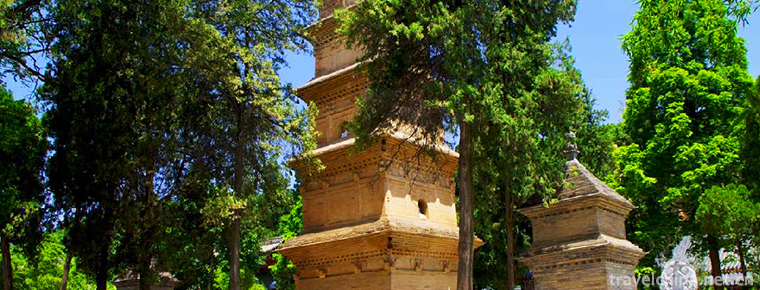
-
Dongshan Lake Hot Spring Resort
Dongshan Lake Hot Spring Resort is the first national AAAA-level scenic spot in Chaozhou City. It is located in the Dongshan Lake scenic spot of Shaxi Town at the junction of Chaozhou.
Views: 136 Time 2018-12-19 -
Size Dongtian Scenic Spot
The Size Dongtian Scenic Area (formerly known as the Haishan Scenic Spot and Aoshan Scenic Spot) is located in the southern corner of Hainan Province, 40 kilometers west of Sanya City.
Views: 387 Time 2019-01-07 -
Baoan Waist Knife Forging Techniques
Baoan waist knife forging technology, Gansu Province Jishishan Baoan Sala Autonomous County traditional handicraft, one of the national intangible cultural heritage..
Views: 160 Time 2019-04-04 -
Tibetan Thangka
Tibetan Thangka, also known as Tangga, is a transliteration of Tibetan language. It is a scroll painting mounted on satin fabrics. It is a kind of painting with Tibetan cultural characteristics.
Views: 164 Time 2019-04-15 -
Firing Techniques of Chaozhou Coloured Porcelain
In Chaozhou at the end of the Qing Dynasty, new colored pigments were used in the colored porcelain painting. Combining traditional glaze painting art with traditional Chinese painting .
Views: 234 Time 2019-04-16 -
Huizhou folk songs
Huizhou folk song is an ancient traditional folk art in Huizhou area. It is rich in content and diverse in genres, including chants, folk songs, minors, Buddhist and Taoist songs,.
Views: 419 Time 2019-05-04 -
Nanjing White Bureau
Nanjing Baiju is an ancient type of music in Nanjing area. The "Nanjing tune" in the Yuanqu brand is the original tune of Baiju's ancient tune. It has a history of more than 700 years. It wa.
Views: 107 Time 2019-06-07 -
Taiji boxing
Taijiquan, a national intangible cultural heritage, is based on the traditional Chinese Confucian and Taoist philosophy of Taiji, Yin-Yang dialectical concept as the core idea, integrating many functi.
Views: 169 Time 2019-06-18 -
Legend of bald tailed Lao Li
Folk legends of bald-tailed Lao Li are widely circulated in Shandong Province, and similar written records are found in Yuan Mei's Zi Yu of the Qing Dynasty: "Bi Shifu, Wendeng County, Shandong P.
Views: 127 Time 2019-06-23 -
Beijing Foreign Studies University
Beijing Foreign Studies University is located in the West Third Ring Road north of Haidian District, Beijing. On the two sides of the three ring road, there are two East and West campuses, which are d.
Views: 148 Time 2019-09-06 -
Climate in Guangan
Guang'an City belongs to the humid monsoon climate zone of middle subtropical zone, with mild climate and suitable for agriculture in four seasons. In summer, it is affected by the Pacific subtropical high, the Qinghai Tibet high, the plateau fluctuation, and the southwest w.
Views: 181 Time 2020-12-19
